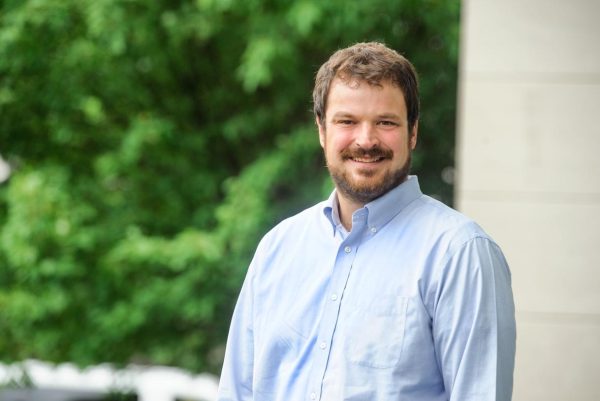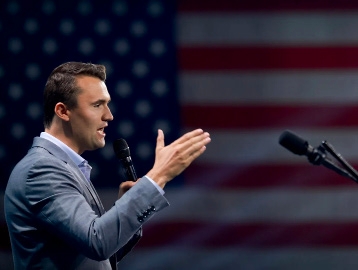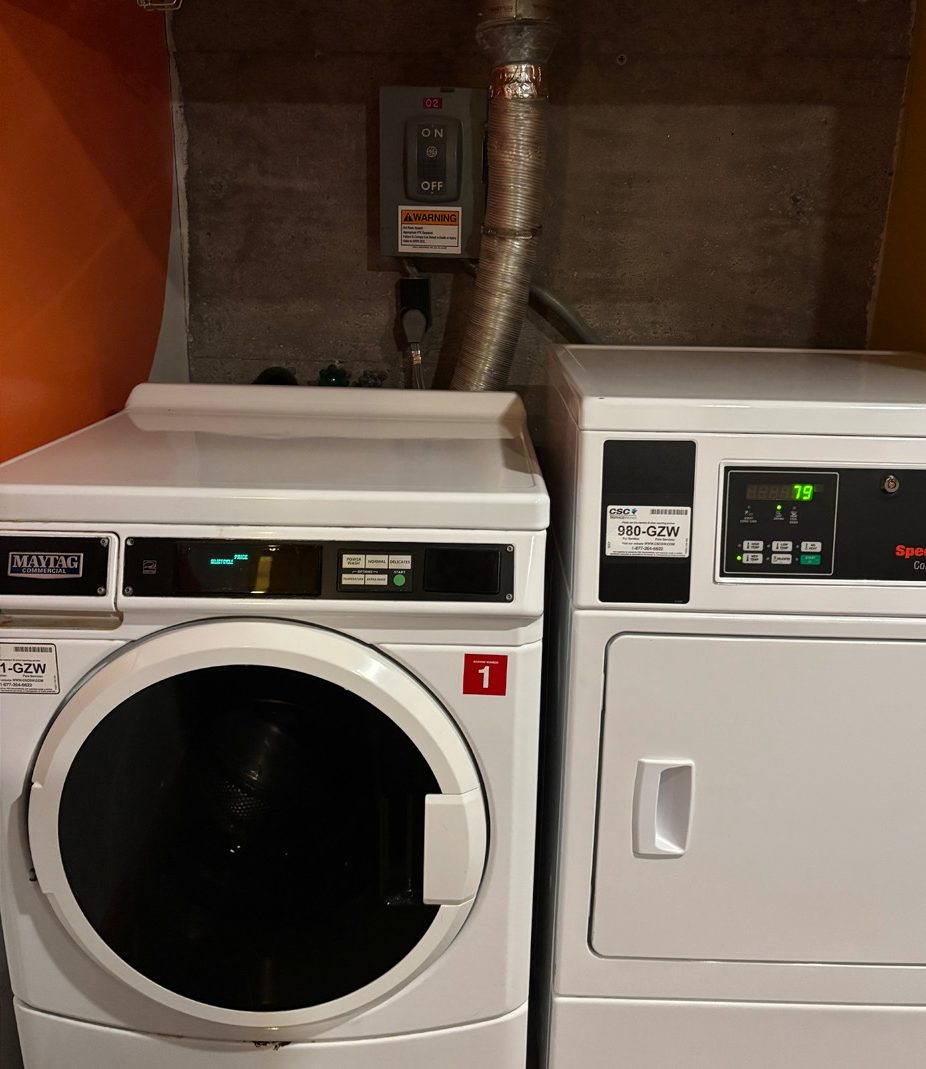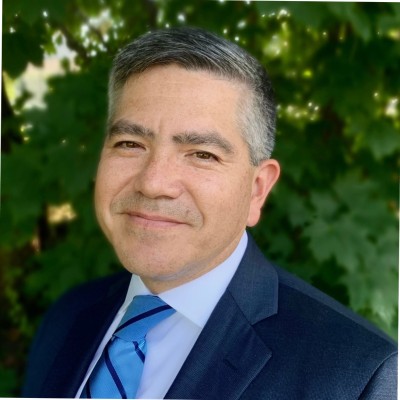
On April 18, Environmental Studies Professor Aaron Strong delivered a presentation with an update on the College’s Climate Action Plan. The event marked the official start of Green Week, a student-led initiative organized by the Hamilton Sustainability Coordinators around Earth Day on April 22. Green Week aims to raise awareness about environmental issues and promote sustainable practices across campus.
Held at noon in the KJ Red Pit, the kickoff event featured food from Lafa and a lively atmosphere, with students chatting and catching up with friends as they waited for the presentation to begin. To boost participation, the Sustainability Coordinators launched a selfie scavenger hunt. Students earn points by attending events and submitting selfies, with the top scorer winning a Tom’s Natural Foods gift card.
Strong began by outlining the global urgency of reducing carbon emissions. He emphasized that carbon dioxide levels continue to rise and that we must reach net-zero emissions by 2050 to avoid “catastrophic climate change.” Net-zero, he explained, means balancing the amount of carbon dioxide released with an equivalent amount removed from the atmosphere by drastically reducing fossil fuel use. Strong stressed that institutions of higher education must lead by example. As centers of knowledge and research, colleges and universities are uniquely positioned to apply their findings and model climate action for others.
Hamilton’s focus on climate action began in 2007 when the college signed the American College & University Presidents’ Climate Commitment, which initially aimed for carbon neutrality by 2050. Between 2007 and 2017, Hamilton developed several sustainability efforts, including the creation of the Sustainability Office, waste reduction initiatives and the start of emissions tracking. It was not until 2018-2020 that the college updated its Climate Action Plan and moved its carbon neutrality goal up to 2030. This shift reflected a growing understanding that Hamilton, like other higher education institutions, must take a more assertive leadership role in sustainability.
Strong explained that these efforts were developed collaboratively with input from students, faculty, staff and the Sustainability Office. He emphasized the importance of having people represented from all groups, especially because sustainability affects every aspect of campus: from facilities and budgeting, to the administration, academics and student life.
Strong outlined the four main strategies of the plan. First, he explained that heating in buildings is the largest source of Hamilton’s greenhouse gas emissions. The college does not have a central heating plant, so it cannot switch to renewable heating at once. Instead, Hamilton is focusing on energy-efficient upgrades as buildings are renovated. For example, geothermal wells were placed in Root Hall. He noted that the College is paying particular attention to the Science Center,
which accounts for 25% of campus electricity use despite occupying just 10% of the school’s square footage.
Strong stated that the second initiative focuses on carbon sequestration through forest management. Hamilton owns roughly 1,000 acres, including over 800 acres of forest and 150 acres of open land. The plan involves managing existing forests and reforesting open land. While past planting efforts faced challenges with high mortality rates, Strong said that these attempts provided valuable information on how to successfully plant and grow forests moving forward.
Third, Strong discussed how the College is working to reduce other sources of emissions by focusing on electric vehicles, increasing EV charging stations and exploring on-campus solar energy. “Every two weeks, a solar company contacts the college,” says Strong. Although the electricity grid in New York is expected to be carbon-free by 2040, installing solar panels on campus could help Hamilton achieve carbon neutrality sooner. It would also “help involve students in the management and the understanding around solar installation in ways that purchasing electricity just does not do.”
The final initiative addresses limiting the use of carbon offsets, the purchasing or reduction of emissions elsewhere to compensate for the school’s emissions. Strong stressed that Hamilton is committed to using only offsets that are “real, additional and local” and that offsets are another opportunity to actively involve students in sustainability efforts on campus. For example, if the college plans to offset athletics travel, the athletics teams should be directly involved. Moreover, “there have been conversations working with sports teams about doing real activities to sequester carbon that follow the principles for what good offsets should be, and that these offsets should also serve the local community directly,” Strong said.
Professor Strong concluded by previewing the upcoming planning process for the 2027 Climate Action Plan update. He explained that, over the next year, the college will continue to work on improving building efficiency, replacing fossil fuel infrastructure, managing reforestation efforts, focusing on possible solar panel agreements and planning for vehicle electrification. Strong also noted that Hamilton has a 90% solid waste reduction goal by 2030, an area where progress has been slower outside of food waste programs.
Throughout Green Week, the Sustainability Coordinators aim to inspire thoughtful dialogue on environmentalism, model effective sustainability practices and foster appreciation for the planet. By emphasizing waste reduction, supporting local sustainable businesses and working with student groups and campus organizations, they seek to highlight the importance of community and collaboration in tackling environmental challenges.
Other Green Week events included a guided glen walk, a Parkhurst vegan pop-up, an on-campus farmers market and more.
























